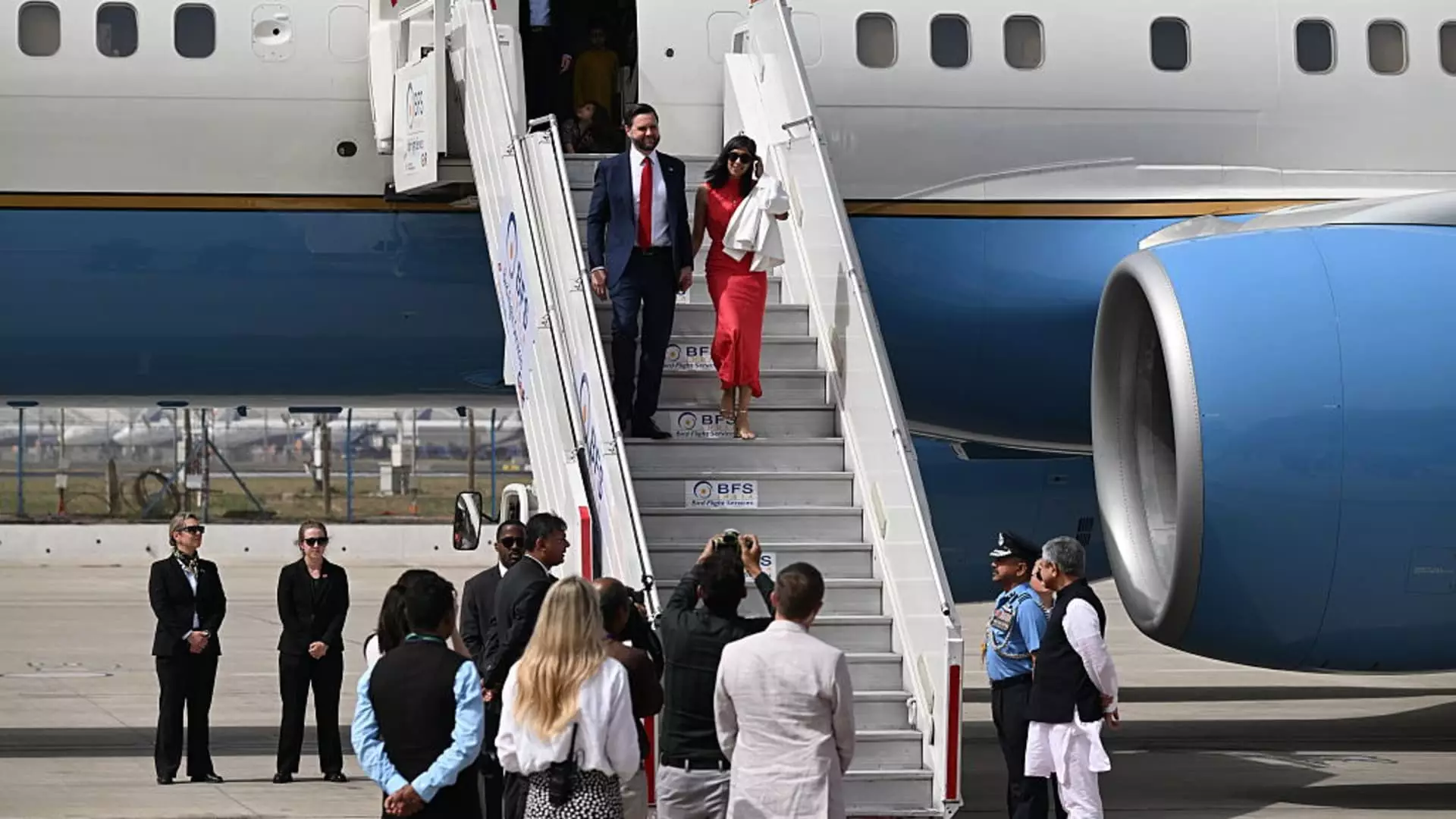In an era marked by uncertainty and fluctuating global relationships, the U.S.-India partnership stands as a significant cornerstone in international diplomacy. The recent visit of U.S. Vice President JD Vance to India embodies both personal and political aspirations that affect not just bilateral ties between the two nations, but also their positions on the global stage. While the visit included scenic tours and family moments, it is imperative to look beyond the surface to grasp the underlying significance of this diplomatic journey.
JD Vance’s visit has been framed as an opportunity to strengthen economic and defense agreements, providing a much-needed lifeline for the India-U.S. trade dialogue, which has faced considerable turbulence. Vance, whose wife is the daughter of Indian immigrants, carries a personal connection that adds emotional weight to the political discussions. However, this visit is not just about reconnecting cultural ties; it is about navigating complex economic waters where both nations face external pressures, particularly from the escalating U.S.-China tensions.
The Urgency of Trade Agreements
With President Trump’s labeling of India as a “tariff king,” the pressure is on for New Delhi to expedite trade negotiations and alleviate tariffs on U.S. imports. Reports suggest that India is contemplating a cut on tariffs for more than half of its U.S. imports, valued at a staggering $41.8 billion for 2024. However, this is an incredibly precarious balancing act for India, as modifying trade agreements risks backlash from domestic industries. Herein lies the paradox of trade in a globalized world: nations are often caught between fostering international ties and shielding local economies.
Vance and Modi’s discussions may seem like a bid for friendly diplomacy, but they are cloaked in an urgency that could have far-reaching implications. India, as the largest trading partner of the U.S., needs to demonstrate its willingness to cooperate without compromising its internal economic stability. The forthcoming 90-day window for tariff discussions opens the door for both nations but also raises the stakes considerably. Each decision made during Vance’s visit could fundamentally shape the dynamics of U.S.-India relations for years to come.
Strategic Defense Interests
Beyond trade, the defensive partnership formed between the U.S. and India offers another layer of complexity. The anticipated framework for cooperation includes significant arms procurement, a move that reflects the deepening military ties aimed at countering shared threats. However, these military collaborations should not overshadow the need for diplomatic engagement that prioritizes dialogue over armed alliances.
The impending visit of U.S. Defense Secretary Pete Hegseth is expected to further advance military cooperation, including the procurement of cutting-edge technologies. While these agreements may bolster regional security, they risk entrenching India into an American geopolitical strategy that could pull it away from its historically non-aligned stance.
Moreover, the Quad Grouping — which includes India, the U.S., Australia, and Japan — illuminates India’s pivotal role in creating strategic frameworks that could pivot away from traditional alliances. This development is a double-edged sword; while it encourages a unified front against shared adversities, it also pressures India into a binary geopolitical atmosphere that conflicts with its historical stance of neutrality.
The Importance of Leadership in Diplomacy
Vance’s high-profile diplomatic visit serves as a reminder of the crucial role that leadership plays in international relations. In a world where economic power is increasingly intertwined with defense strategies, the ability of leaders to engage effectively can determine the course of nations. Yet, Vance’s personal connections and the inherent challenges of navigating trade tariffs suggest a dance of collaboration rather than a confrontation.
While his role as Vice President may place him at the center of U.S. diplomacy, it is his adeptness in balancing his personal history with the rigid demands of political engagements that could set him apart. Nevertheless, this visit comes at a critical juncture where impactful decisions must be made, and India’s response will reverberate throughout the globe. The stakes are high, and both nations find themselves at pivotal crossroads where the decisions made today will sculpt the narrative of global commerce and cooperation in the decades to follow.

Leave a Reply